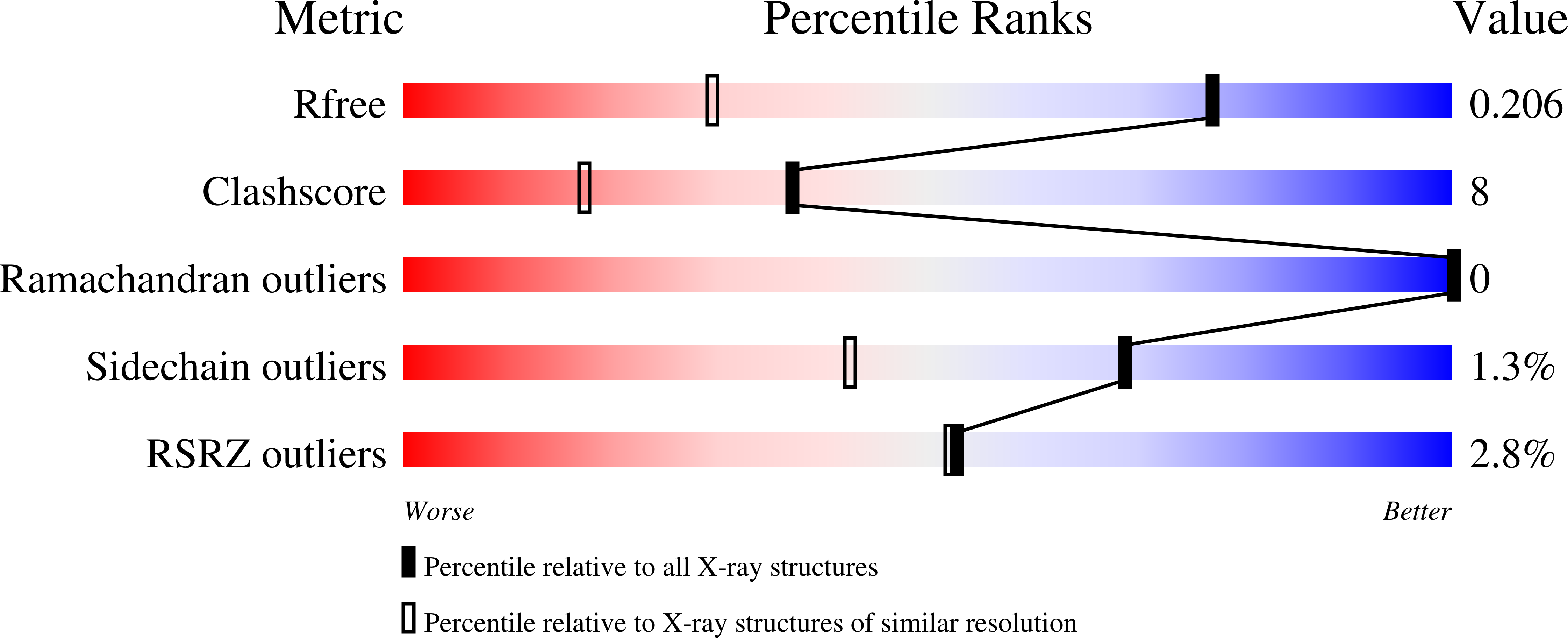Combined crystallographic and spectroscopic analysis of Trematomus bernacchii hemoglobin highlights analogies and differences in the peculiar oxidation pathway of Antarctic fish hemoglobins
Merlino, A., Vitagliano, L., Howes, B.D., Verde, C., di Prisco, G., Smulevich, G., Sica, F., Vergara, A.(2009) Biopolymers 91: 1117-1125
- PubMed: 19373928
- DOI: https://doi.org/10.1002/bip.21206
- Primary Citation of Related Structures:
3GKV - PubMed Abstract:
Recent studies have demonstrated that hemoglobins isolated from Antarctic fish undergo peculiar oxidation processes. Here we show, by combining crystallographic and spectroscopic data, that the oxidation pathway of Trematomus bernacchii hemoglobin (HbTb) is distinct from that observed for the major component of Trematomus newnesi (Hb1Tn), despite the high sequence identity of the two proteins and structural similarity of their ferrous and fully oxidized states. Resonance Raman analysis of HbTb autoxidation upon air-exposure reveals the absence of the oxidized pentacoordinated state that was observed for Hb1Tn. The HbTb oxidation pathway is characterized by two ferric species: an aquo hexacoordinated high spin state and a bis-histidyl hexacoordinated low spin form, which appear in the early stages of the oxidation process. The high resolution structure of an intermediate along the oxidation pathway has been determined at 1.4 A resolution. The analysis of the electron density of the heme pocket shows, for both the alpha and the beta iron, the coexistence of multiple binding states. In this partially oxidized form, HbTb exhibits significant deviations from the canonical R state both at the local and global level. The analysis of these modifications highlights the structural correlation between key functional regions of the protein.
Organizational Affiliation:
Department of Chemistry, University of Naples, Complesso Universitario Monte S. Angelo, Via Cinthia, I-80126 Naples, Italy.

















